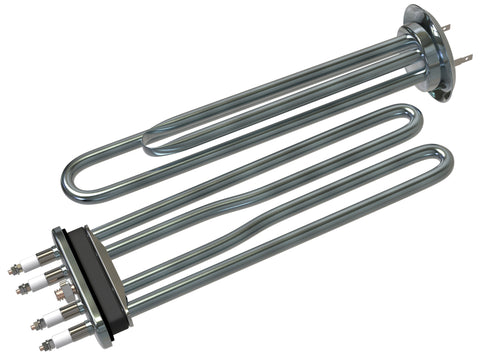Weight Variations in 55-Gallon Oil Drums
A 55-gallon drum is a standard container for transporting and storing crude oil and other petroleum products. But what is the actual weight of a drum full of oil? The weight can vary significantly depending on the type of oil and drum material.
Steel and plastic are the most common materials used to construct 55-gallon drums for the oil industry. Steel drums tend to weigh between 25 and 30 pounds when empty. Plastic drums usually range from 15 to 22 pounds unfilled. The container's weight is relatively small compared to its weight of petroleum.
When full, oil drums can weigh anywhere from 275 pounds for light oils up to over 900 pounds for heavier petroleum products. This wide variance makes understanding the exact weights necessary for proper handling and transport. Carefully monitoring drum weights prevents accidents when moving these heavy containers. Let's dive in to answer the question: what is the weight of a 55-gallon drum of oil?
What Affects the Weight of Crude Oil
Several variables influence the weight of a 55-gallon drum of crude oil:
-
Type of oil (West Texas Medium, jet fuel, raw oil)
-
Steel or plastic drum construction
-
Additives and contaminants
-
Temperature of oil
The weight ranges from approximately half the weight of water to nearly double the weight.
The type of crude oil or petroleum product has the greatest impact on overall drum weight. For example, lighter oils like gasoline and kerosene weigh much less than heavier products like asphalt or bunker fuel oil. The density and viscosity of the substance affect the weight.
Regional variations also influence oil weight. The density of West Texas Intermediate crude averages around 39° API gravity, while heavier, sour crudes from Canada range from 18° to 22° API gravity. The lighter the API gravity, the less the 55-gallon drum will weigh.
Whether steel or plastic drums are used also impacts overall weight. Steel weighs more but provides greater protection for shipping heavier oils. Plastic weighs less but cannot handle hot, dense shipments well.
How much does a 55-gallon liquid drum weigh?
Can 55 gallons be weighed? Fifty gallons of water weighs 459 kg, meaning a drum weighs around 500 pounds. Drums may be lighter or heavier, depending upon the weight.

Understanding API Gravity
API gravity is a key factor determining oil weight, a scale developed by the American Petroleum Institute to measure density. The higher the API gravity, the lighter the oil. Values typically range from 10° for heavy crudes to 70° for light oils.
API gravity and the drum's capacity provide a reasonably precise weight. For example, 55 gallons of 40° API oil weighs about 415 pounds in a steel drum.
Variables Influencing Oil Weight
To answer the question, how much does crude oil weigh? It is crucial to understand that raw oil varies in weight. Heavy oils weigh over 900 pounds per drum. Extra light oils can weigh around 275 pounds.
Most drums of domestic raw oil weigh 450 to 700 pounds, depending upon oil density and drum construction. Steel drums often weigh slightly more than plastic. Raw oil is unprocessed crude directly out of the ground. So, weight variations reflect geographical differences in petroleum reservoirs.
Heavier, sour crude from Canada and Venezuela requires sturdy steel drums measuring around 800 to 900 pounds per 55-gallon container. On average, lighter sweet crude from Texas or offshore production weighs closer to 600 pounds. Some newer hydraulic fracturing wells produce light oils weighing less than 300 pounds per drum.
Understanding regional and source variations allows proper drum selection and loading adjustments for transport vehicles. Smaller steel drums containing heavy crude require forklifts, while larger plastic drums with light oil can be manually handled. Proper scaling balances load distribution for stability.
Weight Restrictions
Whether the discussion is regarding an oil barrel shipment on a truck or a barge carrying crude oil shipments, there are weight restrictions placed on transporting vast quantities of crude oil. Weight restrictions on highways and load-bearing capacity guide oil shipment practices. Smaller containers are used for heavy petroleum products to avoid exceeding weight limits. Large metal drums require mechanical lifting devices for loading and movement.
For example, federal truck transport regulations limit gross weight to 80,000 pounds. A typical tanker truck can legally haul between 1,200 and 1,500 gallons based on the petroleum product density. This often requires a combination of various-sized containers.
Operator licensing also impacts allowable load capacities. Only commercial driver’s license holders with hazardous material endorsements can transport bulk fuel like gasoline or oil. Careful weight calculation while loading is mandatory to stay within individual axle limits for public safety.
Understanding the exact weights for each drum enables safer oil and dangerous chemicals transport in tanker trucks and rail cars, moving vast quantities across the country. Proper drum weights maximize shipment efficiency and help prevent overweight fines for load limit violations.
How do you move a 55-gallon drum of oil?

-
Rolling/Tilting By Hand: For lightweight drums (under 500 lbs), workers can manually roll drums short distances across smooth surfaces or tilt and pivot to pour contents. This manual handling works for occasional small movements but is inefficient for large operations.
-
Pallet Jacks: Low-profile powered pallet jacks can lift and move stacks of 4-6 drums banded to a skid. An experienced operator can transport up to 3,000 pounds of material. Pallet jacks offer maneuverability for interim movements between storage and loading.
-
Forklifts: Most warehouses utilize larger forklifts to efficiently move whole pallets of drums. Forklifts can lift and stack loads 10 feet high, making storage space utilization efficient. The portable nature also allows flexible loading/unloading from multiple transport vehicles using extended forks.
-
Conveyors: Some very high-volume oil operations install conveyor systems to seamlessly move drums. Powered roller beds can queue and feed lines of drums to load trucks, railcars, and barges rapidly. Conveyors provide a continuous flow but require permanent infrastructure.
In summary, tilting, rolling, and leveraging momentum manually move lighter single drums for short transfers. Pallet jacks and forklifts allow powered stacking and transportation for truck and train loading at higher capacities. Large operations deploy infrastructure like conveyors to optimize volume, speed, and efficiency when dealing with thousands of oil drums. The right moving method depends on the weight, quantity, and duration needed.
Monitoring Weights for Safe Transport
While the oil industry has developed standards to gauge oil weights precisely, variations still exist depending on oil type, temperature, and drum specifications. Consulting API density tables, measuring API gravity with hydrometers, and weighing drums on scales provide the most precise oil weight parameters for shipping and storage.
Careful monitoring and management of petroleum weights prevent usage-related damage, wear, and accidents when tipping the scales with 55-gallon crude oil or chemical shipments. Proper packaging, labeling, scaling, and handling based on weight restrictions are crucial for safety across the supply chain.
Whether steel or plastic, 55-gallon drums have optimal capacities for storing and transporting petroleum products; understanding the weights involved by oil type and the container is key to stabilizing these heavy loads on trucks, trains, and ships delivering vast fossil fuel quantities across the country and worldwide.







